This was published 1 year ago
Dirty pool: The ‘disgraceful inconsistency’ exposed by Chinese doping scandal
By Chip Le Grand and Tom Decent
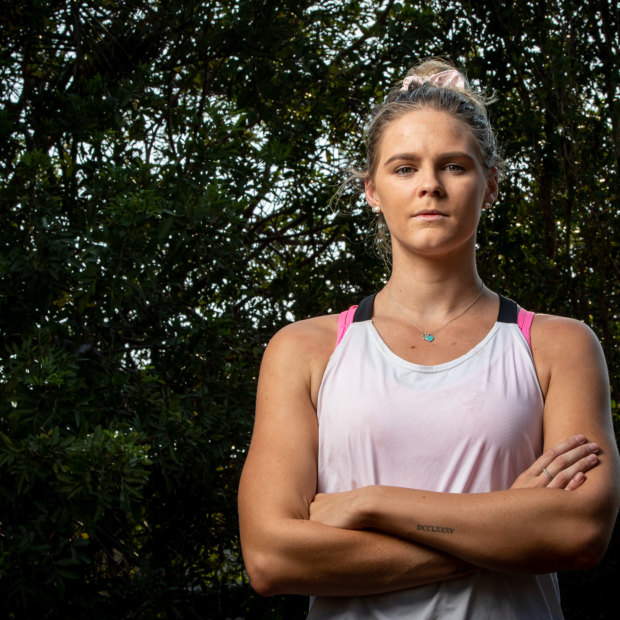
Shayna Jack was banned for two years after her positive doping test despite convincing the Court of Arbitration for Sport she did not deliberately ingest the substance. Credit: Paul Harris
Even within the annals of fantastical stories offered by athletes to explain how a performance-enhancing drug got into their body, it was a tale that stretched credulity.
When Olympic skier and cyclist Katerina Nash tested positive to a banned peptide hormone in November 2022, she didn’t blame a tainted supplement or a dodgy steak. The alleged culprit was Rubi, her beloved Vizsla.
Rubi was dying with cancer. To prolong her dog’s life, Nash hand-fed her an appetite stimulant. Unbeknown to Nash, a Czech athlete living in California, the medication contained a banned peptide. Nash suspected she absorbed minute traces of the substance when she splashed some of it on her hands.
The US Anti-Doping Agency, responsible for the case, approached Nash’s claims with an open mind. USADA boss Travis Tygart says anti-doping authorities should work as hard to clear innocent athletes as they do to catch dirty ones. He listened to Nash’s story, agreed to investigate and, after scientists demonstrated the peptide could be absorbed in the circumstances Nash described, concluded she was telling the truth.

Olympic skier and cyclist Katerina Nash with her dog Rubi.
The entire process took four months and throughout this time, USADA followed the letter of the world anti-doping code. When Nash failed her test, she was provisionally suspended from competition. When USADA was satisfied four months later that it was a case of accidental ingestion, it registered a formal, no-fault finding and published its reasons.
This is how the global anti-doping system is supposed to work.
Tygart and other anti-doping experts are trying to keep an open mind about the revelation that 23 Chinese swimmers failed drug tests six months before the last Olympics and were cleared in secret to compete in Tokyo but the response so far from the World Anti-Doping Agency has served only to deepen suspicions of dirty pool.
Speaking to this masthead from Colorado Springs, Tygart says that in failing to challenge the way such an unusual and potentially damaging case was handled by China’s anti-doping agency CHINADA, WADA departed from its own rules and a fundamental principle of anti-doping. In doing so, it risks undermining the confidence of all athletes preparing for Paris.
“It is a really horrendous situation for clean athletes,” Tygart says. “They are feeling helpless right now, which is terrible for the whole movement.” David Howman, a former WADA director-general, is more succinct: “It doesn’t pass the smell test.”
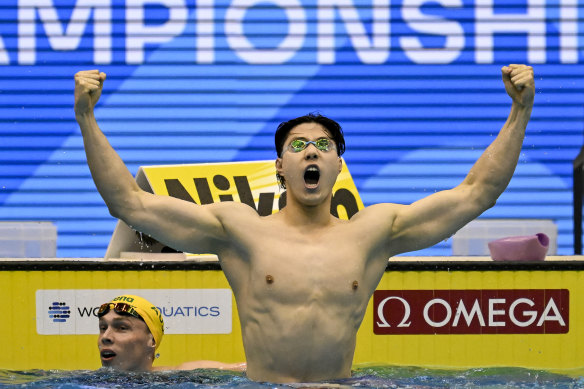
Qin Haiyang celebrates his 2023 world championship win against Australia’s Zac Stubblety-Cook in the men’s 200m breaststroke.Credit: Getty
Those involved in the protracted saga surrounding Australian swimmer Shayna Jack’s failed drug test are also struggling to reconcile the harsh justice she received compared to WADA’s lenient treatment of the Chinese swimmers.
When Jack tested positive to tiny traces of a banned anabolic agent in 2019, she was immediately suspended from competition and sent home from the world championships. Despite convincing the Court of Arbitration for Sport that she did not deliberately ingest the substance or intend to cheat, she was banned for two years, publicly shamed and plunged into a career and life-threatening crisis that ended her dream of swimming in Tokyo.
WADA and Australia’s national anti-doping body Sport Integrity Australia (SIA) were not satisfied with the two-year ban and went back to CAS, asking them to double it. Their appeal was unsuccessful but meant Jack’s ordeal was prolonged through to September 2021. By that time, some of the Chinese swimmers who secretly failed drug tests earlier in the year were back home from Tokyo being hailed as Olympic champions.
Jack, like all Australian swimmers hoping to make the team for Paris, is in the middle of her final block of heavy training before the Olympic trials in June. She is determined not to become distracted by the Chinese scandal and has privately vowed not to comment on it between now and Paris. NSW District Court judge Paul Conlon, who helped Jack’s defence as an adviser to her legal team, is less restrained.
“The disgraceful inconsistency in the way Shayna Jack was treated by WADA and SIA has now been starkly highlighted with the revelations in respect of 23 Chinese athletes testing positive to banned substances prior to the Tokyo Olympics,” Conlon tells this masthead. “Shayna was immediately pulled from training camp and later publicly exposed. Not so the Chinese athletes. CHINADA decide no fault or negligence on the part of the athletes and benignly pass it off as adverse analytical finding.
“WADA and World Aquatics then simply wave it through commenting that it was supported by consistently low concentrations of the banned substance. All done under a veil of secrecy and all athletes allowed to take part in the Tokyo Olympics.”
In January 2021, when much of the world including parts of China were cocooned by COVID-19 restrictions, nearly two dozen of China’s best swimmers competing at the national championships in the city of Shijiazhuang tested positive to a banned stimulant, trimetazidine. Of those, 13 went on to race in Tokyo.
Those who tested positive include 200m breaststroke world record holder Qin Haiyang, 200m individual medley Olympic champion Wang Shun and Zhang Yufei, the winner of four medals in Tokyo and one of the brightest stars in world swimming.
This extraordinary episode remained secret for four years. We only learned about it a week ago because of concerns raised by whistleblowers and the diligent work of investigative journalists from German broadcaster ARD and The New York Times. Those journalists spent two years examining how the positive tests were managed by CHINADA and why WADA, despite prima facie evidence of systematic doping of Chinese swimmers, did not intervene.
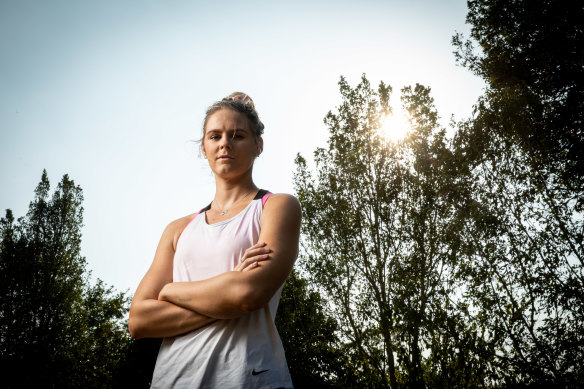
Olympic aspirant Shayna Jack is determined not to be distracted by the Chinese doping scandal.Credit: Paul Harris
The ARD documentary and New York Times reports provide detailed accounts of how the swimmers tested positive to tiny amounts of a prescription heart medication which has long been used off-label as a performance enhancer by former Soviet and east European athletes. Their most important source document was a CHINADA report. It concluded the positive tests to trimetazidine, or TMZ, were the result of a mass contamination inside the restaurant kitchen of the Huayang Holiday Hotel where the athletes stayed during the national championships.
WADA’s senior officials this week sought to explain, most notably in a 100 -minute press conference with journalists from around the world, why they accepted CHINADA’s decision not to treat the episode as a doping case. On Thursday, an emergency board meeting of WADA’s executive committee resolved to appoint an outside lawyer, retired Swiss prosecutor Eric Cottier, to review its decisions in the China case.
The review was welcomed by SIA chief executive David Sharpe but has not satisfied Tygart, who says it is not sufficiently independent and its terms of reference too narrow. “By calling this an ‘independent’ investigation, WADA leadership is trying to pull the wool over our eyes,” he said in a statement issued early Friday.
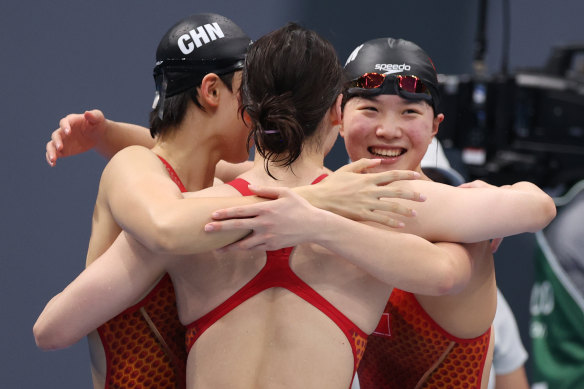
China’s 4X200m relay team celebrate their Olympic gold medal in Tokyo.Credit: Al Bello
WADA general counsel Ross Wenzel, an experienced anti-doping lawyer who was introduced to the case as an external counsel briefed by WADA to review the CHINADA findings, said WADA first learned in March 2021 of 28 positive tests involving 23 Chinese swimmers. By April, WADA knew Chinese authorities were pursuing a contamination theory as the likely explanation.
Wenzel said there were indications from the start of CHINADA’s investigations that this was a case of accidental contamination rather than deliberate doping. As evidence, he cited the facts that all athletes who tested positive stayed at the same hotel, all positive tests were to infinitesimal concentrations of trimetazidine and that some athletes tested multiple times over the space of three days returned tests which fluctuated between positive and negative.
He also confirmed that the most important element of the contamination defence — the source of contamination – was purportedly discovered by officials from China’s Ministry of Public Security, a national government department normally responsible for counter-terrorism, border protection and combating organised crime.
According to the CHINADA report, security officials examined the restaurant kitchen two-and-a-half months after the tests were returned and found traces of trimetazidine inside spice containers, a rangehood fan and a drain. Wenzel said the Chinese authorities were unable to explain how a prescription heart medication got into a hotel kitchen. “The ultimate source, meaning how the TMZ got into the kitchen, was not discovered,” he said. “CHINADA and the authorities conducted a number of interviews in order to try to establish how the substance could have got into the kitchen but that didn’t result in anything concrete and they didn’t hypothesise in their report.”
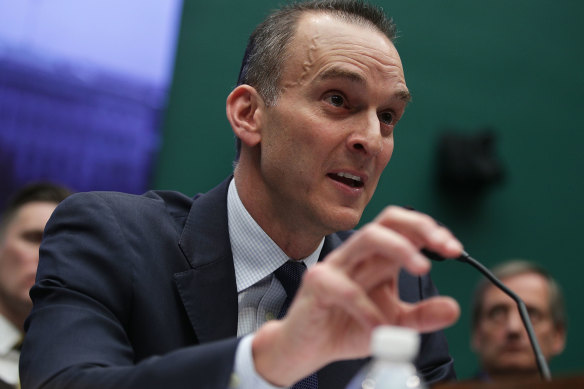
US anti-doping boss Travis Tygart.Credit: Getty Images
This explanation invites scepticism but was not investigated by WADA, which in the four years since the contamination theory was first floated has not inspected the restaurant kitchen or sought to interview Chinese athletes, coaches or hotel staff. The nomination of the hotel kitchen as the likely source of contamination is the critical difference between the case of the Chinese swimmers and Jack. Despite funding her own, exhaustive inquiries, she was not able to identify how she came into contact with Ligandrol, an experimental substance which is not approved for human use in Australia but is readily found as an ingredient and contaminant in sports supplements.
Wenzel insists WADA did not accept the China report at face value and sought independent advice from legal and scientific experts and the pharmaceutical company that sells trimetazidine. However, he confirmed that despite WADA being in possession of a whistleblower claim from as early as September 2020 that CHINADA was actively covering up drug use by swimmers, it did not launch its own investigation.
WADA president Witold Banka says the information held by WADA did not meet the threshold to open one. “We had no evidence of wrongdoing to present and no credible way to disprove the contamination theory that was accepted by CHINADA, a position that was also accepted by World Aquatics,” he says.
These responses, particularly this last comment by Banka, suggest that WADA extended Chinese swimmers a presumption of innocence and benefit of doubt strikingly at odds with the experience of other athletes who have been through the anti-doping system.
The way anti-doping normally works, WADA doesn’t have to disprove contamination or any other defence. From the moment an athlete tests positive to a banned substance, the onus on them is to prove they didn’t cheat or negligently ingest a banned substance. A positive test is treated as evidence of doping. This reverse onus of proof, known as strict liability, is the defining feature of the world anti-doping code. When WADA appeals a case, the entire matter is prosecuted de novo, or anew. “They have flipped strict liability on its head,” Tygart says. “That is not how the rules have ever operated.”
Two-time Olympian and former 100m breaststroke world record holder Brenton Rickard does not begrudge Chinese swimmers being afforded the benefit of doubt. But, having been through what he describes as “18 months of hell” after he learned in 2020 that a urine sample he provided at the London Games had been re-tested and shown traces of a banned diuretic, he describes the challenge confronting athletes to prove contamination as a game of chance.
The passage of eight years time between London 2012 and the re-testing of his sample meant Rickard had no way of establishing how the diuretic furosemide – a contaminant found in some paracetamol products – got into his system. He didn’t cheat but only escaped forever being labelled as one after WADA changed its rules and introduced a minimum concentration threshold for Furosemide and other diuretics.
“My experience has very much tainted how I view these things,” says Rickard, a former president of the Australian Swimmers’ Association now working in sports management. “If there was compelling evidence that clearly demonstrated contamination, the case is done and their confidentiality should be respected.

Retired Australian swimmer Brenton Rickard describes his battle to explain a positive drugs test as “18 months of hell”.Credit: Paul Harris
“As someone who felt wrongly accused, and someone who had the case against me dropped after it had become public knowledge, it highlights the flaws in the system. Positive tests due to contamination seem to be happening quite a lot and the evidence needed to establish your innocence is not clearly defined. It is effectively a game of chance. That is a disconcerting part of the whole system. It really scares me.”
For anti-doping experts like Tygart and Howman, the chair of the World Athletics integrity unit, there are troubling aspects about the way WADA approached the case of the Chinese swimmers. If WADA had not readily accepted CHINADA’s explanation for what happened, every fact raised as evidence of contamination could also lead to a conclusion that China’s top swimmers were caught by testers at the tail end of a national doping program designed to boost their performance heading into an Olympic year.
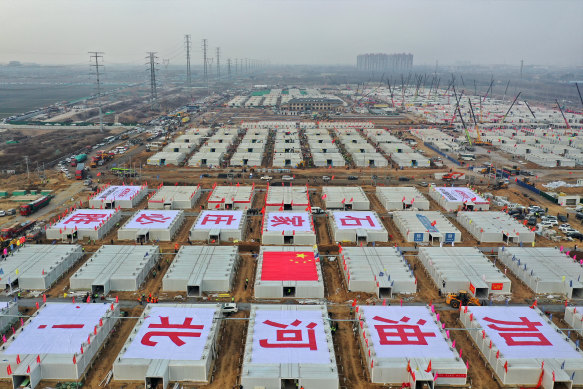
A massive quarantine facility was built in Shijiazhuang in January 2021 as the city’s COVID response entered “wartime mode”.Credit: Yang Shiyao
Every athlete who tested positive stayed at the same hotel and, as Tygart knows from his involvement in investigating the world’s most infamous drug cheat Lance Armstrong, teams that dope together tend to stay together. The fluctuations between positive and negative test results by the same athletes are curious, but when modern testing equipment can detect concentrations of one trillionth of a gram, results can vary according to hydration levels and when an athlete had their last meal, Tygart says.
WADA’s Wenzel argued that due to the tiny concentrations detected, the swimmers would have received no performance benefit when they raced. This is true. It is also true of Jack, true of Rickard and as Tygart points out, has never been accepted by WADA as a defence in any doping case. Using a banned substance to improve recovery or boost energy during training is no less a form of cheating than being doped to the gills when you take the starting blocks.
WADA appears not to have questioned how Chinese security officials found traces of trimetazidine two-and-a-half months after the national championships. A week after the Shijiazhuang meet, the city in response to rising COVID cases shifted into what Beijing described as “wartime mode” of public health measures. Wouldn’t this have involved deep cleaning of hotel kitchens? Professor Fritz Sorgel, the director of the Institute for Biomedical and Pharmaceutical Research in the southern German town of Heroldsberg, told the ARD documentary: “When you read the [CHINADA] report, you are naturally very surprised at how everything fits together wonderfully.”
Tygart does not know whether the Chinese athletes were deliberately administered trimetazidine, but he says WADA’s suspicions should have been aroused, particularly once it became clear that CHINADA had not followed the normal processes of the world anti-doping code. These include provisional suspensions of athletes who return positive tests for banned substances.
“The best information you get in this world is when you have a positive test. They have come up with this fairytale of a story that it somehow showed up in the kitchen and got in their systems. That is all the evidence you need to open an investigation,” Tygart says. “WADA should have appealed the case and also brought a compliance case against CHINADA.”
Howman says his greatest concern is what this episode means for the confidence athletes and the public have in the anti-doping system. He says the first step towards rebuilding that confidence would be to publish, subject to any redactions needed to protect athlete privacy, all information related to the case including the CHINADA report.
“Are they now going to be able to work with any reputation?” Howman asks of WADA. “What is their plan to ensure they can absolutely convince athletes who are competing that there is nothing going on? The only way to do that is to be more transparent and provide documentation and show why these decisions were taken.”
News, results and expert analysis from the weekend of sport sent every Monday. Sign up for our Sport newsletter.